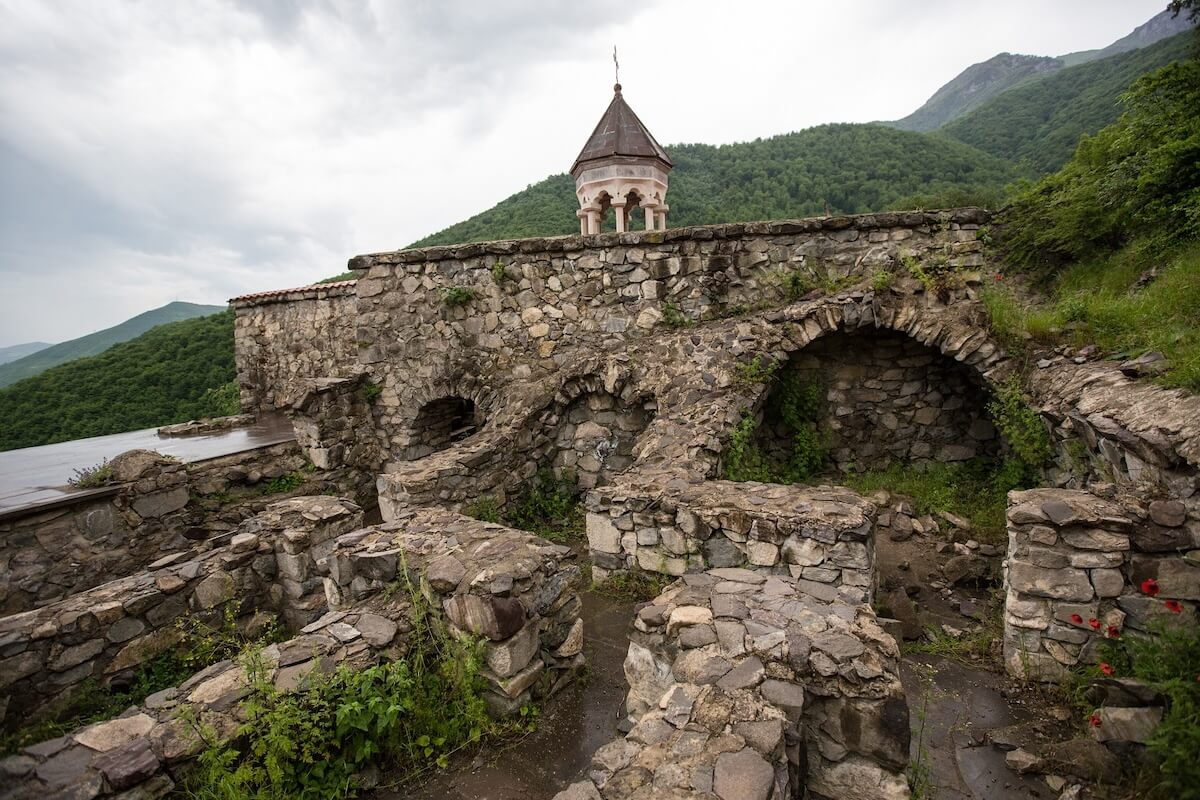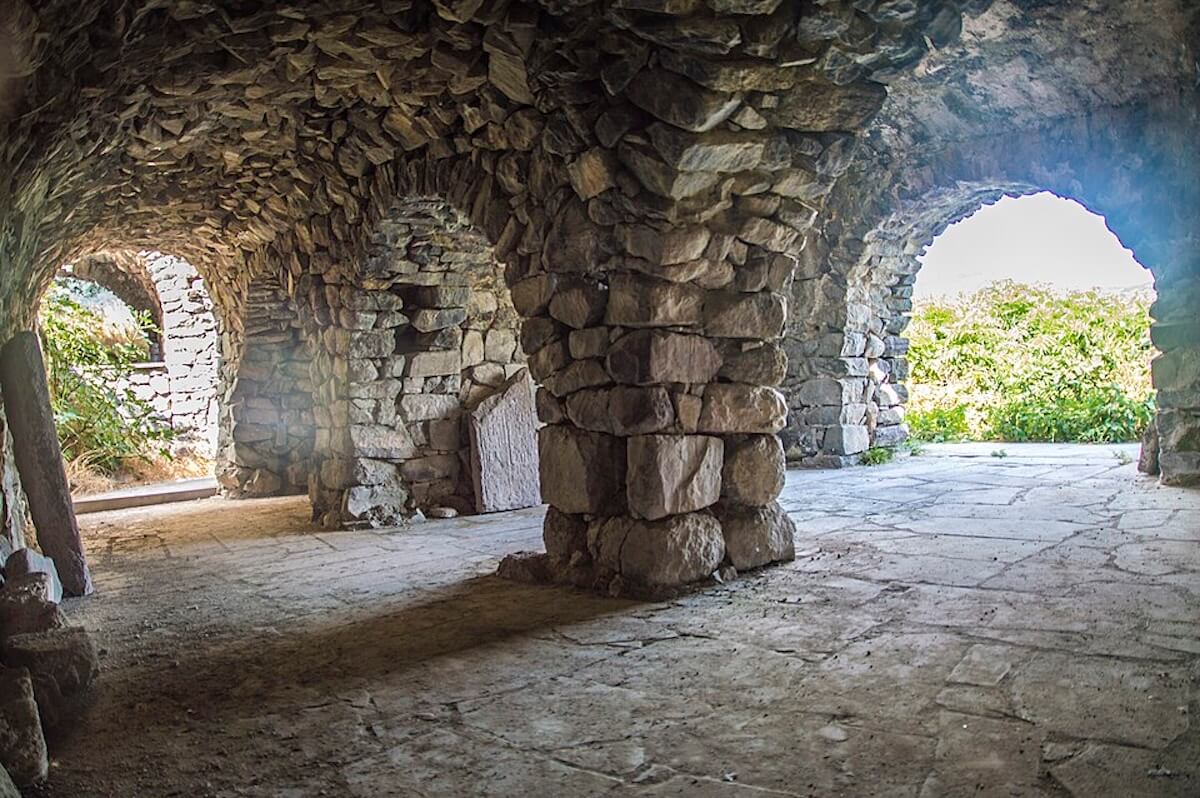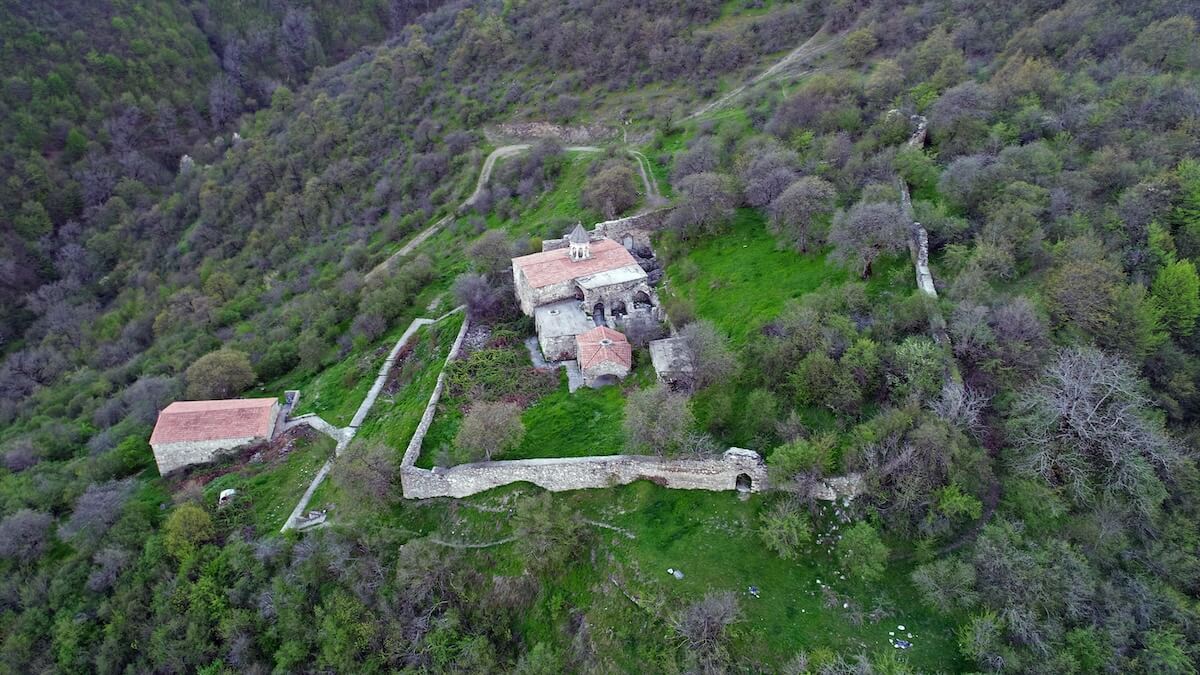Halidzor Fortress
Halidzor Fortress (also known as the Halidzor Convent of the Holy Mother of God) is an Armenian architectural complex located in Syunik Province, on the right bank of the Voghji River. It was originally built as a monastic retreat in the first half of the 17th century. In the 18th century, David Bek rebuilt it into a fortress, which—thanks to its naturally fortified location—became the main stronghold of his liberation movement and the political center of the Armenian principality of Syunik.
CONTACT INFORMATION
VIRTUAL TOUR
3D Model
About Halidzor Fortress
In 1000, Queen Shahandukht built the domed Church of St. Stepanos with a gavit (narthex), storage buildings, and a monastic complex with a large brotherhood. In 1006, her son Sevada, brother of King Vasak of Syunik, added the Church of St. Karapet and an adjoining vaulted hall to the east.
Vorotnavank featured a cruciform plan with a central dome, three apses, and richly decorated interiors, including preserved fresco fragments showing a starry blue sky and an angel. A memorial column with a cross atop it was erected near the northern wall. The complex was fortified with walls and included workshops and prayer halls. Both Queen Shahandukht and Prince Sevada were buried at the monastery. Vorotnavank was sacked by the Seljuks in 1104 but revived under the Orbelian princes. It later became a center of scholarship, hosting renowned theologians like Hovhan Vorotnetsi and Grigor Tatevatsi. Severely damaged in a 1931 earthquake, the monastery remains a significant monument of medieval Armenian architecture and spiritual life.




